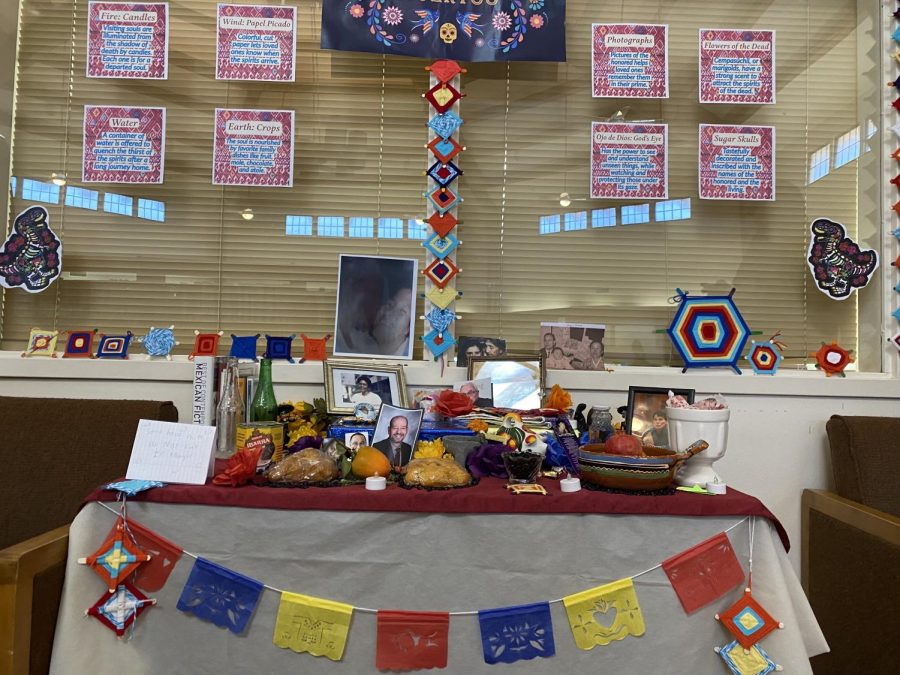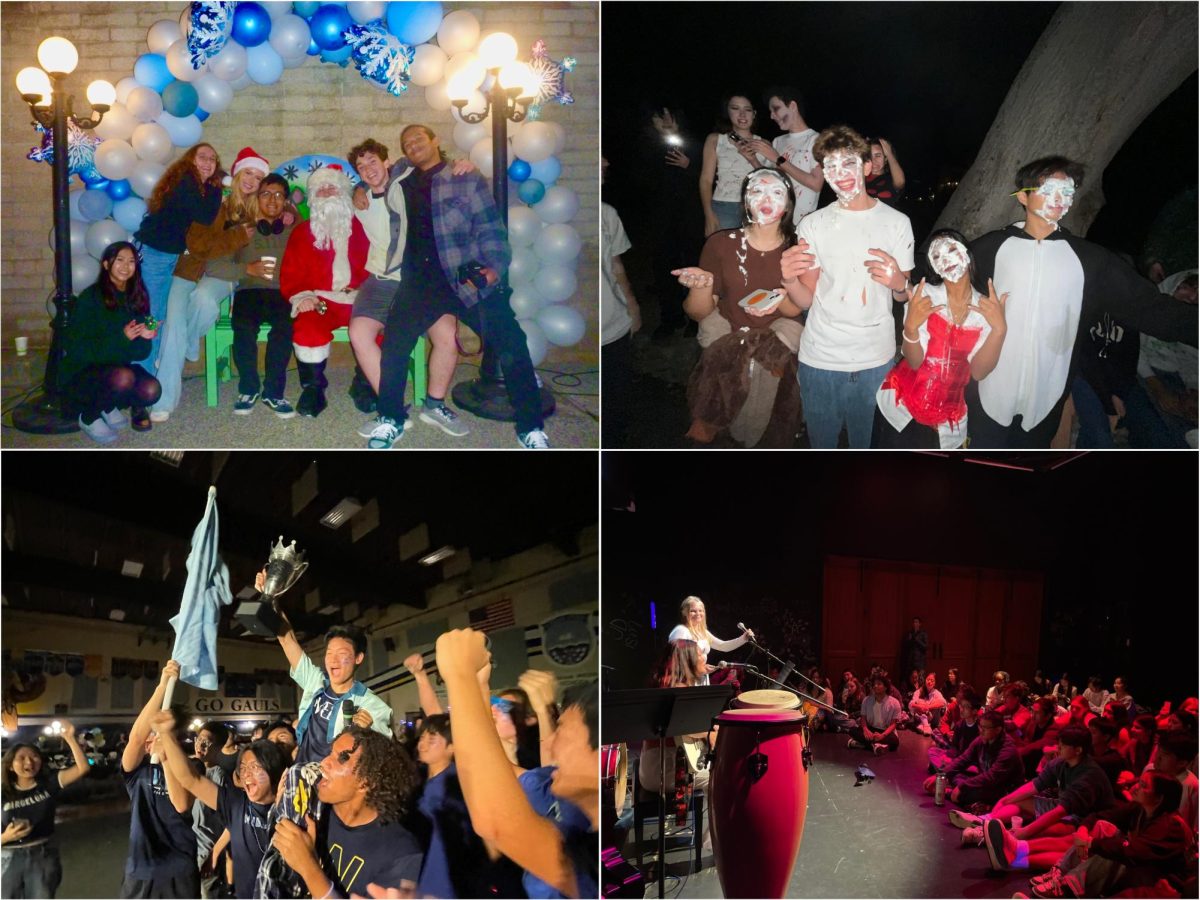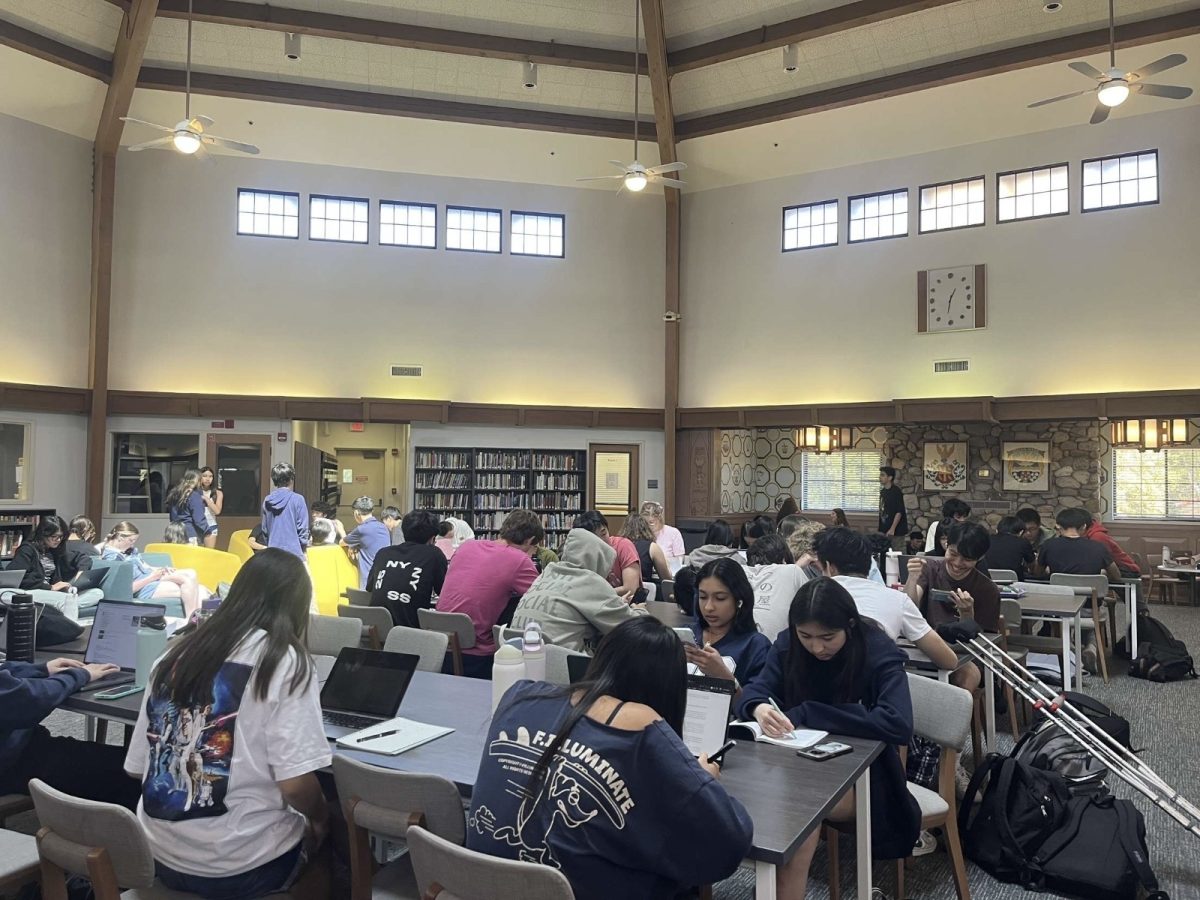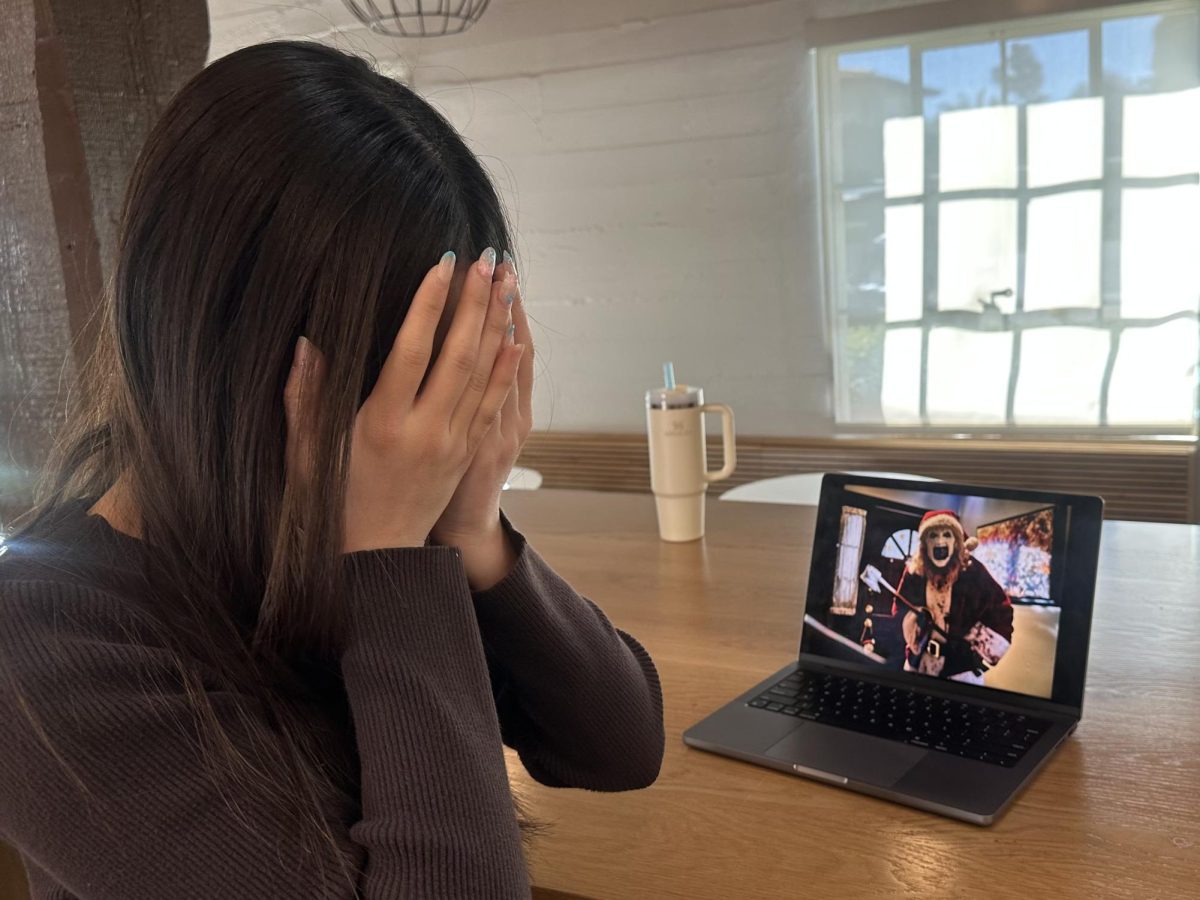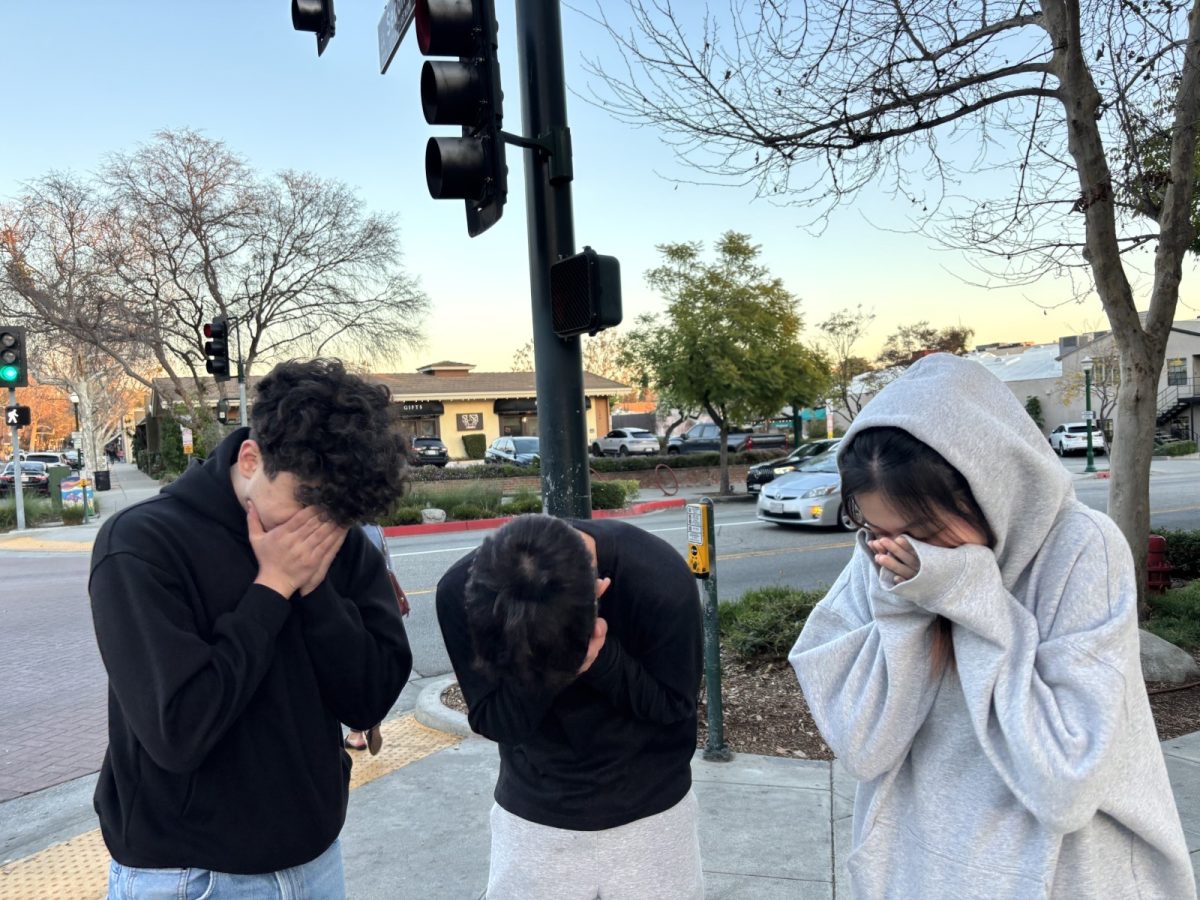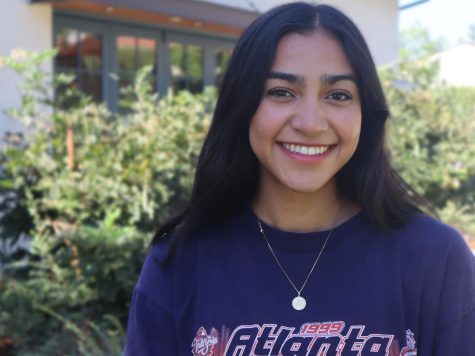Last year, COVID –19 extremely impacted “Día de los Muertos,” Day of the Dead, celebrations. Día de los Muertos is a holiday commonly celebrated in Mexico, when families and friends come together to celebrate the life of loved ones they have lost. The pandemic brought many festivals and gatherings to a halt as people were forced to stay home. Coming back after a year of great loss, Webb students have seized the opportunity to represent their own heritage and bring the community together during Día de los Muertos.
Emilia Bordage (‘23) and Sofia Centeno (‘22), members of the Webb Latinx Clubs, decided to create a community “ofrenda,” Spanish for altar, where anyone from the Webb community can place pictures of loved ones that they had lost. The ofrenda also includes decorations and explanations of its cultural significance.
Emilia and Sofia saw this as an opportunity to bring the community together, while also teaching others about the importance of Día de los Muertos.
“I feel like we celebrate so many things here at Webb. There’s lots of big events, but I have never really seen the community celebrate Día de Los Muertos,” said Emilia (‘23). “I mean they do it in class, but I don’t feel like the students truly understand the depth and the spirituality of the holiday. I felt like finally coming back to Webb, it was time to bring our community together and represent [Hispanic heritage].”
To get students involved in the festivities, Emilia and Sofia used STAS to invite students to help make “Ojos de Dios,” which means eye of God, for the community ofrenda. Ojos de Dios are an indigenous art form that represent everything that is invisible to the human eye. They are meant to protect your spirit and guard you. Originally made from yarn and wooden dowels, the Ojos de Dios were adapted by Emilia and Sofía who decided to use popsicle sticks instead.
Not only did Webb students celebrate Día de los Muertos through the community ofrenda and crafts, but they also learned about the day in their Spanish class curriculum. Teachers at Webb believe it is necessary to educate students on the culture and celebrations that surround Día de los Muertos.
“We had the opportunity to try ‘el pan de muerto’ (the bread of the dead),” said Esteban Vazquez, Language department faculty. “We also did a comparison work between Halloween and Día de los Muertos.”
Mr. Vasquez explains the different types of activities he used to introduce his class to Día de los Muertos.
“We saw several movies and scenes to understand a little more of the history behind Día de los Muertos because it is sad, but many people think that Día de los Muertos is like Halloween for Latinos,” Mr. Vasquez said. “It’s not, it’s completely different. That is why we try to incorporate a little more culture and food, everything students would need to understand a little more about this unique celebration.”
Emilia and Sofia explained that it was difficult to get everyone involved this year in the Día de los Muertos activities. However, they were extremely impressed with the turnout they got and by how many people truly wanted to help with crafts and the ofrenda.
In the coming years, they hope that the celebration can have a freater impact on the Webb community. They even plan to reach out to the DEI (Diversity Equity and Inclusion) and ESVI (Empowering student voices initiative) to brainstorm ideas for next year’s Día de los Muertos celebration.


